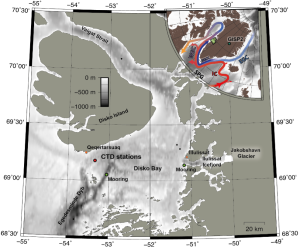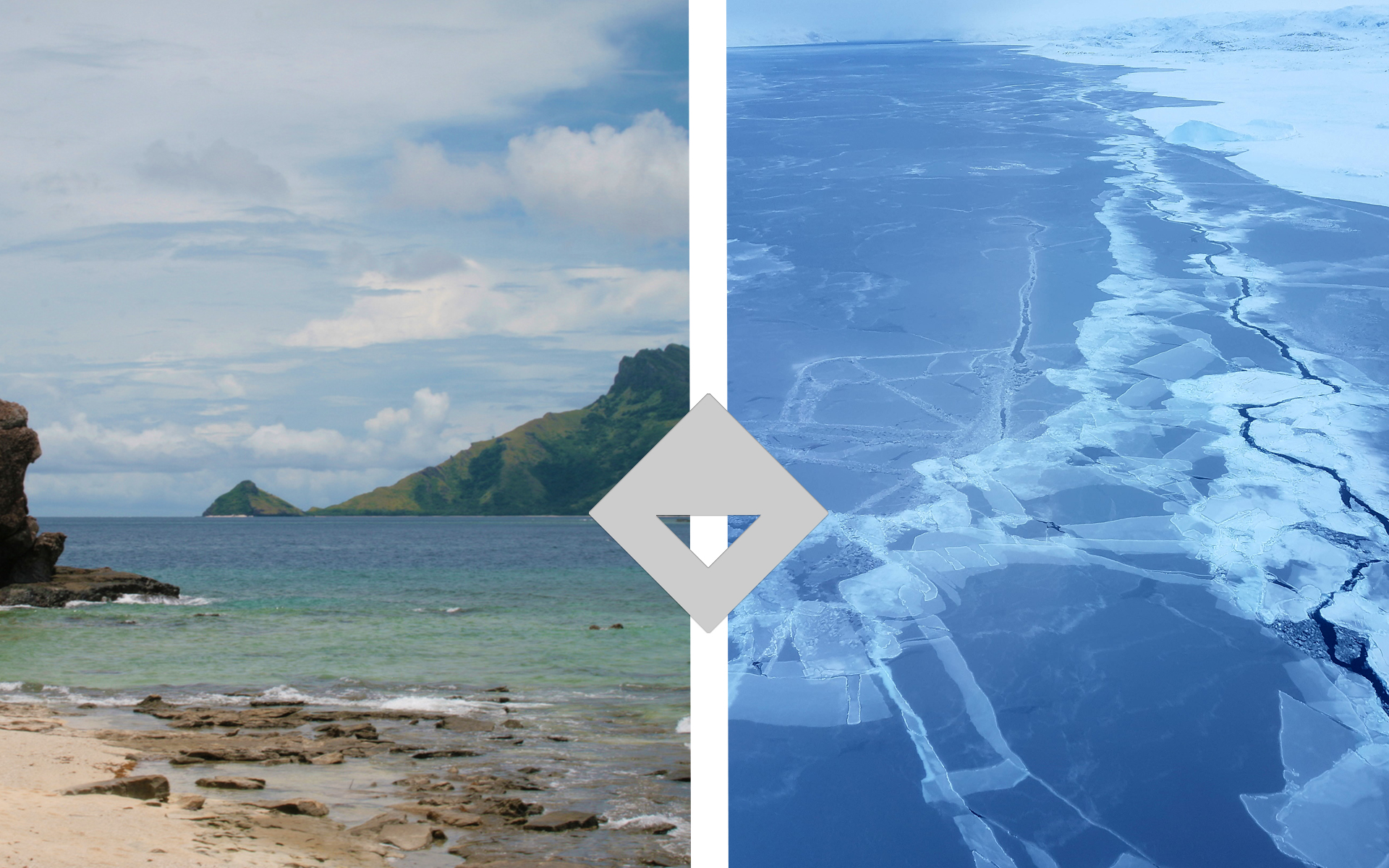Personnel: Camilla S. Andresen (GEUS), Lars H. Smedsrud (UiB), Fiamma Straneo (UCSD), PhD.
Melting ice and changes in wind and ocean currents related to global warming greatly impact the seasonal hydrography, sea ice and circulation in the Greenland fjords where local communities live, fish, and hunt. ClimateNarratives will use Disko Bay as a case study for such an ocean-glacier system, where Jakobshavn Glacier (Sermeq Kujalleq; Jakobshavn Isbræ) enters the ocean. This is the largest marine-terminating glacier in western Greenland and drains 7% of the Greenland ice sheet and produces ~10% of its icebergs. The ice stream drains into Disko Bay via the 1000 m deep and 45 km long Ilulissat Icefjord producing a cold and fresh surface layer with melt water, icebergs and seasonal sea ice. Increased freshwater run-off from melting glaciers is expected to affect the fjord stratification and its seasonal development, with direct implications for the sea ice cover and local ecosystem. Underneath the cold layer, there is a warmer and more saline layer of Atlantic Water contributing to effective melting of the glacial ice. The freshwater outflow is replenished by inflow of this warm Atlantic water via the estuarine circulation. Increased Atlantic water temperature and volume has been a key player in driving melt rates and instability of the ice front, but in recent years Atlantic water has cooled. This circulation system may, or may not, intensify in the future and create a strong stratification of cold and warm water masses in the fjord with implications for fjord biodiversity and fish stock. WP3 will improve observations of this fjord system, and contribute actively towards making useful predictions for local people regarding sea ice cover, Atlantic Water temperature and related biological consequences in cooperation with WP5.

